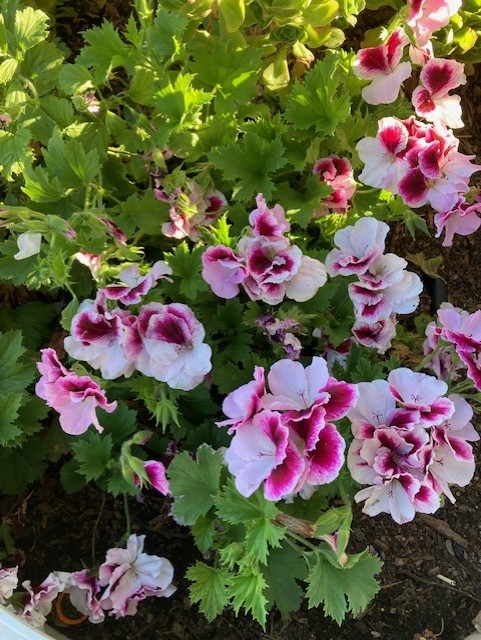The Master Gardener Plant Exchange
Up and coming: The UCCE Master Gardener Fall Plant Exchange, Saturday, September 28, 2024, 9 AM to 12 PM.
Fall is a great time to plant, not just for the plant's health for the gardener's as well. The soil is warm, but the air temperature is usually a little cooler. Fall planting encourages plant roots to branch out, take root and stockpile nutrients over fall and winter. Come spring, fall-planted transplants will have stronger roots, contributing to hardier plants that are more drought-tolerant and heat-resilient. Fall planting also usually doesn't require as much watering after the first month or so - air temperatures decrease and rain usually takes over the job. Mulching is still important during planting at any time to help keep the moisture in the ground and in plant roots.
Our last plant exchange was in April. Here are some of my observations and suggestions gained from that event. Some of the first plants to get picked up to get rehomed were squash starts grown by Julie S. I brought them for her and no sooner than they were placed on the table they were gone. Seeds can be started now indoors for arugula, beets, bok choy, broccoli and brassicas, collards, kale, lettuce, spinach and Swiss chard. All can be transplanted when day temperatures are around 80-90 degrees, usually perfect for October in Solano County!
California Natives were big hits. If one of these is going to go from a container into the ground, the time to do that is before the first rain for the roots to grow. Again, don't forget to apply mulch. If you are the one thinking of taking the native home, check https://calscape.org to see if it will do well in the location you're envisioning. This website of the California Native Plant Society has been recently revamped and it is excellent. With exceptional photography, it includes all the requirements your prospective plant needs and all the pollinators it will attract. If you want to propagate your native and need the steps, check this webpage for more information: https://ucanr.edu/sites/MGsSMSF/files/388232.pdf. For successful transplanting techniques, another excellent website is from the Alameda County Master Gardeners https://acmg.ucanr.edu/Over_the_Fence/Planting_California_Natives/.
Many gardeners brought succulents. Most were not potted and that's not a problem at all. Take a healthy leaf or two from a stem. Let it sit for at least two days up to a week in a warm spot out of the direct sun, checking for a scab to form where the leaf had been attached to the stem. Once the scab is formed, you can dip the end in rooting hormone (or not) and then stick the scabbed end into potting soil upright or lay it flat on the potting soil in a shady space, no direct sunlight. Mist, don't water, the leaves and then whenever the soil feels dry. In our area, that may be every day. Your baby succulent and roots will emerge in anywhere from just a few weeks to a few months depending on the plant. When the mother leaf starts to wither, transplant the baby to its own pot in the shade and cut off the withered mother leaf. Mist the baby when the soil feels dry. Gradually and slowly move the new plant to a sunnier location, decreasing watering while the succulent matures.
Geranium cuttings of all types were also abundant. If you are bringing a cutting, using sterile shears, cut a few inches of stem off the flowering end of the plant. If you are the taker, it will need to sit out for about 3 days to develop a scab or callus. Then put the calloused end in the ground or potting medium. Letting the stem ends callous helps prevent fungi from attacking the root system. I learned this propagation method from my dad who has many containers of geraniums in his yard. The first geranium cuttings to be snatched up at the plant exchange were the Martha Washington (AKA regal geranium).
Many more drought-tolerant plants that had been potted were snatched up, as well as seed packets and bulbs. There were gardening books and magazines and plant containers and vases that many people took. Towards the last hour of the sale, friends of a Master Gardener who had recently died brought her container plants to the exchange. They were readily picked up as she had had some rarer plants that were recognized as such. I thought that was a fitting tribute – new homes for her well-loved plants. I HOPE – Have Only Positive Expectations - for these special plants.
If you are bringing any plants to the exchange, all plants will be given a check for bugs/disease. If there are any, the plant will be discarded, not composted. All plants, seeds, bulbs, books, magazines and containers are FREE. Come one, come all!
